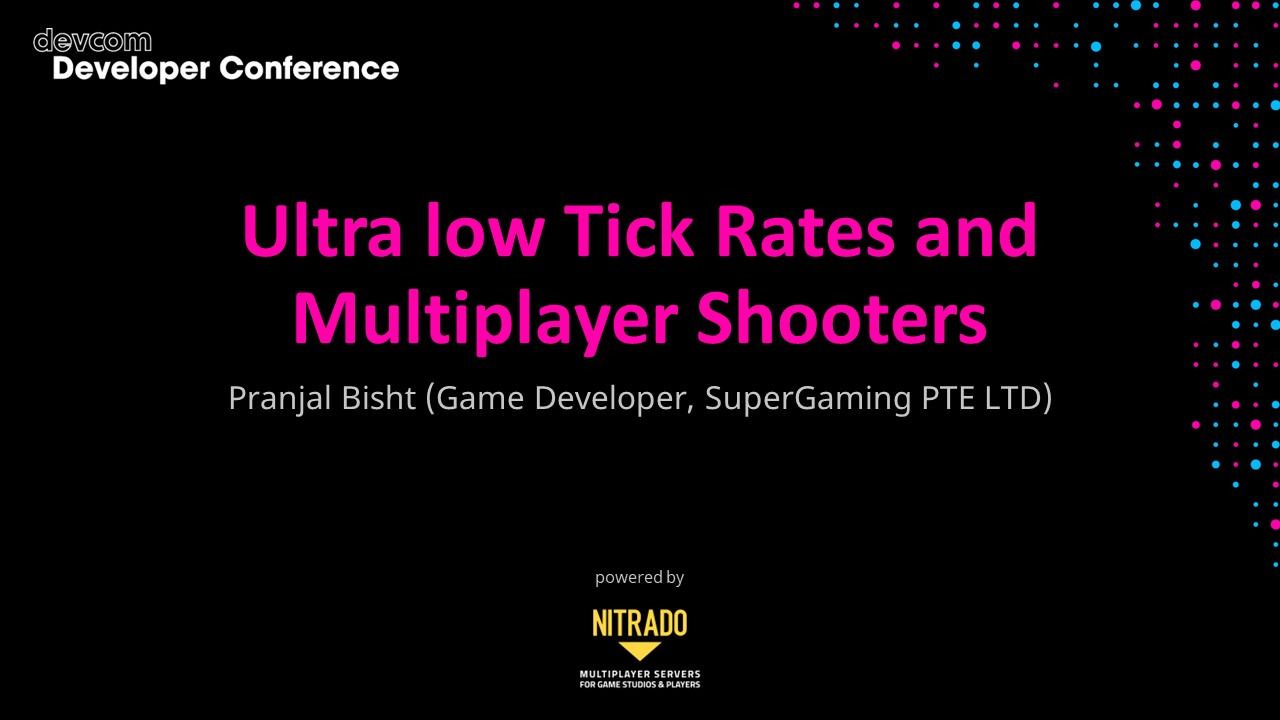

Ultra low Tick Rates and Multiplayer Shooters
Stage 3 - Multiplayer Track - Confex Level 1
~All~Tech & Coding
Information
In realtime networked games, tick rate - the number of times the server processes data every second - directly translates to more accuracy and less latency. Most competitive shooters run at very high tick rates (64 to 128Hz) - to be as competitive and as fair as possible, because more is better.
What if you don't have the hardware and resources for it - when your game has to run on a mobile device? What if your game simply has too many calculations to process? You have to reduce the tick rate - what happens if you run a realtime game like a shooter at tick rates of 20Hz or lower?
In addition to latency and a plethora of problems associated with it, especially in fast-paced shooters, trying to get your tick rate as low as humanly possible comes with its own challenges.
In this talk we'll be looking at how to deal with these challenges from a technical standpoint to preserve the competitiveness of a shooter while being able to run on very low-end hardware.
Some topics explored will include
- Sub-tick accuracy - *Interpolating not just presentation but also simulation*
- Dealing with input lag - *Processing aiming and movement inputs at frame-rate*
- Emphasis on execution order - *Making sure your entire loop is self-contained in one tick*
- Design solutions to overcome the "unfairness" of low-tick rates like high TTK(Time To Kill) and pushing players by design to adapt to the low tick rate
Target Audiences
Gameplay and Network Programmers
Experience Level
Intermediate
Key Take Aways
- Running your realtime networked games on low-end hardware while saving server processing costs
- Making your game feel responsive while simulating at a much lower rate
- Achieving maximum accuracy within an inherently inaccurate framework
- Enhancing competitiveness and fairness in an environment often seen as hostile to these attributes.
Session Type
Talk



